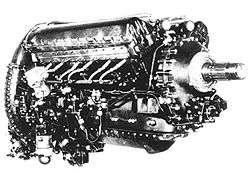Miss Shilling's orifice

Miss Shilling's orifice was a very simple technical device made to counter engine cut-out in early Spitfire and Hurricane fighter aeroplanes during the Battle of Britain. While it was officially called the R.A.E. restrictor, it was normally referred to under various names, such as Miss Tilly's diaphragm or the Tilly orifice in reference to its inventor, Beatrice "Tilly" Shilling.
Engine cut out problems
The early versions of the Rolls-Royce Merlin engine came equipped with a SU carburettor. When these aeroplanes performed a negative G force manoeuvre (pitching the nose hard down), fuel was forced upwards to the top of the float chamber of the carburettor rather than into the engine, leading to loss of power. If the negative G continued, the fuel would collect in the top of the float chamber, forcing the float to the floor of the chamber. This would in turn open the needle valve to maximum, flooding the carburettor with fuel and drowning the supercharger with an over-rich mixture. This would lead to a rich mixture cut-out, which would shut down the engine completely, a serious drawback in combat.[1]
Negative G commonly occurs when manoeuvring to fire on an enemy aircraft in a dogfight. Moving the stick forward would starve the engine of fuel, producing a sudden loss of power. This would let the enemy get away, and if continued the manoeuvre would cause the carburettor valve to open, provide far too rich a mixture and stop the engine. During the Battles of France and Britain, the German fighter aeroplanes had fuel injected engines and therefore did not suffer from this problem as the fuel injection pumps kept the fuel at a constant pressure whatever manoeuvres were made. The German pilots could exploit this by pitching steeply forward while pushing the throttle wide open, the pursuing British aircraft being left flat footed since trying to emulate the manoeuvre would result in loss of power, or fuel flooding and engine shutdown. The British countermeasure, a half roll so the aircraft would only be subjected to positive G as they followed German aircraft into a dive, could take enough time to let the enemy escape.
Negative G engine cut-out was not a problem unique to Merlin-powered fighters since many other pre-war aeroplanes also used carburettors containing a float chamber. For example, in 1942, the United States acquired a flyable, Japanese Mitsubishi A6M Zero, known as the Akutan Zero. When test-flown, this aircraft was also found to experience engine cut-outs, due to the float-type carburettor of its Nakajima Sakae engine. The Americans devised tactics to counter the Zero in combat that took advantage of this and other results of testing the aircraft.[2]
The Tilly orifice
Complaints from the pilots led to a search for a solution. Beatrice 'Tilly' Shilling, a young female engineer working at the Royal Aircraft Establishment at Farnborough, came up with a disarmingly simple solution. She introduced a simple flow restrictor: a small metal disc much like a plain metal washer. The restrictor orifice was made to accommodate just the fuel needed for maximum engine power, the power setting usually used during dogfights. It came in two versions, one for 12 psi manifold pressure and one for boosted engines with 15 psi manifold pressure.[3]
While not completely solving the problem, the restrictor, along with modifications to the needle valve, permitted pilots to perform quick negative G manoeuvres without loss of engine power. This improvement removed the annoying drawback the RAF's Rolls-Royce Merlin-powered fighters had had in comparison to the German Messerschmitt Bf 109E machine, whose Daimler-Benz DB 601 inverted V12 powerplant had possessed fuel injection since 1937. Miss Shilling travelled with a small team around the countryside to one RAF base after another in early 1941 fitting the restrictors, giving priority to front-line units. By March 1941 the device had been installed throughout RAF Fighter Command. Officially named the 'R.A.E. restrictor', the device was immensely popular with pilots, who affectionately named it 'Miss Shilling's orifice' or simply the 'Tilly orifice'.
This simple and elegant solution was only a stopgap: it did not allow inverted flight for any length of time. The problems were not finally overcome until the introduction of Bendix and later Rolls-Royce pressure carburettors in 1943.
References
Notes
Bibliography
- Lumsden, Alec. British Piston Engines and their Aircraft. Marlborough, Wiltshire: Airlife Publishing, 2003. ISBN 1-85310-294-6.
- Price, Alfred. The Spitfire Story: Second edition. London: Arms and Armour Press Ltd., 1986. ISBN 0-85368-861-3.
- Rearden, Jim. Koga's Zero: The Fighter That Changed World War II. ISBN 0-929521-56-0, second edition, Missoula, Montana: Pictorial Histories Publishing Company, 1995. Originally published as Cracking the Zero Mystery: How the U.S. Learned to Beat Japan's Vaunted WWII Fighter Plane. ISBN 978-0-8117-2235-3.
Further reading
- Negative Gravity, the Life of Beatrice Shilling, by Matthew Freudenberg (ISBN 0-9546165-0-2)

